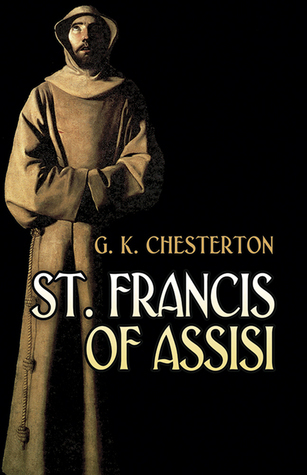Sean Bala rated Not Always So: 3 stars

Not Always So by Shunryu Suzuki
Not Always So is based on Shunryu Suzuki's lectures and is framed in his own inimitable, allusive, paradoxical style, rich …
An American residing in Chicago with two degrees in comparative religions. Lived in India for five years. Currently working in higher education. Always have four to five books in rotation and always up for new recommendations!
Some Favorite Genres: #fantasy #scifi #history #speculativefiction #politics #anthropology #religion #mysteries #philosophy #theology #ecology #environment #travel #solarpunk
Some Favorite Authors: Margaret Atwood, Ray Bradbury, E.M. Forster, Ursula K. LeGuin, John Steinbeck, W. Somerset Maugham
Currently Cleaning Up my To Read Collection
Find me on Mastodon (mas.to/@seanbala) and Pixelfed (pixelfed.social/@seanbala)
This link opens in a pop-up window

Not Always So is based on Shunryu Suzuki's lectures and is framed in his own inimitable, allusive, paradoxical style, rich …
"From the Ruins of Empire: The Revolt Against the West and the Remaking of Asia" by Pankaj Mishra is an engaging intellectual history which looks at the history of Asian responses to Western imperialism and Westernization in the 19th and 20th centuries. What makes it particularly interesting is how Mishra is able to use the two lesser-known historical figures - Jamal al-Din al-Afghani and Liang Qichao - to show the way in which intellectuals across Asia in various places were engaging in the same basic question: how should Asian societies respond simultaneously to the breakdown of their societies and traditions and to Westernization and modernization. Each one dealt with the question differently given their cultures or national circumstances but all were fundamentally dealing with the same question. On a broader level, Mishra seeks to argue is that critiques of modernization and Westernization go back much further than historians typically argue …
"From the Ruins of Empire: The Revolt Against the West and the Remaking of Asia" by Pankaj Mishra is an engaging intellectual history which looks at the history of Asian responses to Western imperialism and Westernization in the 19th and 20th centuries. What makes it particularly interesting is how Mishra is able to use the two lesser-known historical figures - Jamal al-Din al-Afghani and Liang Qichao - to show the way in which intellectuals across Asia in various places were engaging in the same basic question: how should Asian societies respond simultaneously to the breakdown of their societies and traditions and to Westernization and modernization. Each one dealt with the question differently given their cultures or national circumstances but all were fundamentally dealing with the same question. On a broader level, Mishra seeks to argue is that critiques of modernization and Westernization go back much further than historians typically argue (mid 19th century) and goes much deeper than is usually described. There are two other interesting narrative lines in the text worth mentioning. First is the complicated role that Japan played in the historical narrative and the overall development of pan-Asian consciousness as a both a model to emulate but also a violent aggressor. Second is that pivotal role that the Paris Peace Conference of 1919 had in fomenting a decisive break between Asia and the West. For Mishra, it was the failed promises of Woodrow Wilson and the West encourage national self-determination for Asia that led thinkers to reject liberal democracy and look to Islamism, nationalism, autocracy, and communism as alternatives.
It is left-leaning (very JNU - Indian readers will get the reference) and there are times that Mishra seems to try to minimize some aspects of the history to make his point. For example, while acknowledging the violence and brutality of Japanese occupation, Mishra argues that for many nationalists, the period of Japanese occupation was remembered more fondly as when nationalist movements began their ascent. I understand what Mishra is trying to say, but I do feel that the legacy of Japanese occupation during the Second World War is a bit more complicated.
But overall, I enjoyed the book. It tells a complex story in a new way and you will look at Asian history and current events differently afterwards.

In this final episode of "The Earthsea Cycle", the widowed Tenar finds and nurses her aging friend, Sparrowhawk, a magician …

When the prince of Enlad declares the wizards have forgotten their spells, Ged sets out to test the ancient prophecies …

“As we go about our daily lives, caste is the wordless usher in a darkened theater, flashlight cast down in …

Ged, the greatest sorcerer in all Earthsea, was called Sparrowhawk in his reckless youth.
Hungry for power and knowledge, Sparrowhawk …

Having long indulged himself in daydreams more exciting than his mundane life as a carpet merchant, Abdullah unexpectedly purchases a …

As the oldest daughter, willful, outspoken Sophie knew that her life could lead to nothing but mistakes. When her father …

Francis of Assisi is, after Mary of Nazareth, perhaps the greatest saint in the Christian calendar, and one of the …

At a time of much despair over the future of liberal democracy, Jill Lepore makes a stirring case for the …

The science fiction masterpiece continues in the "major event,"( Los Angeles Times) Children of Dune. With millions of copies sold …

In this book Steve Hagen puts the essence of Zen Buddhism in simple words - deceptively simple. Reading a page …

"In the beginner's mind there are many possibilities, but in the expert's there are few."
So begins this most beloved …

The extraordinary sequel to Dune, the greatest science fiction novel of all time. Twelve years after his victory over House …